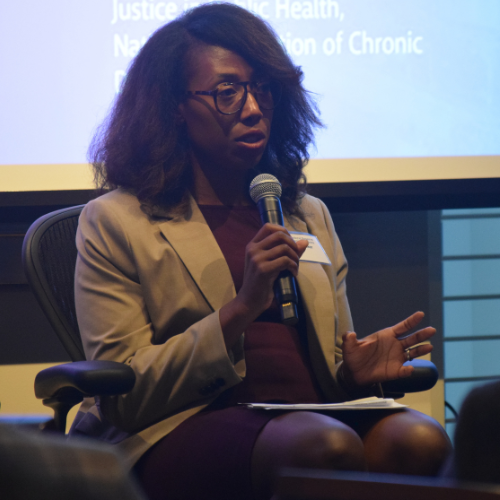
Messaging Guide: Communicating About Overdose Prevention
- Pamela Mejia, MPH, MS
- Kim Garcia, MPH
-
Focus Areas
Alcohol, Tobacco, Drugs & Mental Health, Capacity Building & Leadership -
Issues
Rural Health -
Expertise
Media Advocacy & Communications -
Programs
Berkeley Media Studies Group, Center for Health Leadership and Impact -
Strategic Initiatives
Opioids

Overdose prevention saves lives. While there are many successful and proven strategies for overdose prevention, substance use treatment, and harm reduction, they are not well-known or widely available. Worse, they are characterized as controversial and plagued by misinformation.
For many people living with substance use disorder or people who use drugs, including prescription opioids and illicit fentanyl, there are many barriers keeping them from receiving adequate and high-quality information and care, which can lead to poorer health outcomes and increased risk of death, particularly among Black, Indigenous, communities of color and LGBTQ+ communities.
This messaging guide provides recommendations and resources for local leaders and advocates in developing strategies to communicate about overdose prevention and substance use treatment with a range of audiences. This resource was developed by the National Overdose Prevention Network (NOPN), based at the PHI’s Center for Health Leadership and Impact, in partnership with PHI’s Berkeley Media Studies Group (BMSG).
see the guide
The guide also includes examples that focus on key issue areas that emerged from conversations with experts, including ways to address and reframe stigma against people who use substances; how to counter pushback against policies like harm reduction efforts and substance use treatment; and unique considerations for rural communities.
Messaging Recommendations for Advocates
- A clear and specific overall strategy should shape the rest of your communications, not the other way around.
- Defining the audience with the power to make the change you seek will inform elements of your message strategy, like the frames you use, the values you evoke, the messengers you engage, and how you reach your target audience.
- You can respond to misinformation and difficult questions without repeating false claims.

Sample Overall Communication Strategy: Harm Reduction
The following sample communications strategy is excerpted from "Messaging Guide for Communicating about Overdose Prevention"
What problem or issue do you want to address? Heightened rates of overdose due to funding cuts to harm reduction programs and decreased access to naloxone and safer use supplies.
What solution will you propose? Reinstate funding to harm reduction programs.
Who has the power to make this change? Public health department and government officials.
How will you influence your audience? Present at city council meetings and conduct 1-on-1 meetings with government officials.
What allies can help you make your case? First responders, doctors, and/or people in recovery.
Originally published by Berkeley Media Studies Group
Work With Us
You change the world. We do the rest. Explore fiscal sponsorship at PHI.
Support Us
Together, we can accelerate our response to public health’s most critical issues.
Find Employment
Begin your career at the Public Health Institute.


